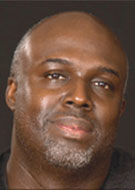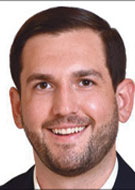Safety Net Hospitals Address Barriers to High-Quality Care
Radiologists can help overcome hurdles and bring about positive change




This is the fifth in a series of articles addressing health care equity and the solutions radiology can implement. Read part one, part two, part three and part four. View the health care equity infographic for details on how RSNA is working to promote diverse representation across the profession and within its leadership.
Radiologists at safety net institutions face obstacles at all stages of imaging as they care for patients.
“These obstacles are often complex, interrelated and difficult to address within the context of considerable resource constraints,” said Jinel Scott, MD, MBA, associate professor of clinical radiology in the Department of Radiology at SUNY Downstate Health Sciences University, and director of emergency radiology, quality improvement and patient safety in the Department of Radiology at NYC Health + Hospitals/Kings County.
Both institutions where Dr. Scott provides care are safety net hospitals. In the U.S., these hospitals care for patients who are uninsured or unable to pay for medical treatment.
Increased Screening Access Improves Outcomes
One major challenge at safety net institutions is limited financial and human resources, which can make it difficult to initiate and properly manage imaging and screening programs. Dr. Scott points to the Healthy Lungs Program at NYC Health + Hospitals/Kings County, which offers lung cancer screening, as an example.
“Though lung cancer screening has been proven efficacious in decreasing the mortality associated with lung cancer based on early detection, it was a challenge to bring this service to the community,” Dr. Scott said. “It required significant multidisciplinary consensus building and dedication by physicians and institutional leadership to acquire the necessary funding and support.” Stephen Waite, MD, director of the Healthy Lungs Program, is optimistic that such screening programs can help with early diagnosis, enabling more patients to survive a lung cancer diagnosis. Since its inception in June 2021, more than 167 patients have been screened.
“Thus far, we have a very high percentage of positive cases compared to the original data from the National Cancer Institute’s National Lung Screening Trial, demonstrating the importance of this program in our community,” said Dr. Waite, who also serves as director of cardiothoracic imaging at NYC Health + Hospitals/ Kings County and clinical associate professor of radiology and internal medicine at SUNY Downstate Health Sciences University.
Other data underscore the need for increased screenings at safety net institutions. Research presented at RSNA 2021 found that less than 25% of patients at a Boston Medical Center received yearly mammograms.
“Patients with Medicaid were almost 50% less likely to receive mammograms than privately insured patients. We also found that in patients diagnosed with late-stage tumors, their average screening interval was more than a year longer than the patients diagnosed with early staged cancers,” said Alex Boyko, a fourth-year medical student at Boston University School of Medicine, who presented a scientific poster on the impact of demographic and financial disparities on breast cancer mortality. “Nearly 70% of the patient deaths occurred in patients who had not been screened within the past 750 days or at all.”
“Residential racial segregation has led to safety net hospitals taking care of a disproportionate number of people of color and/or from lower socioeconomic strata, whom historically have had worse overall health and more advanced disease. These hospitals have also been found to have markedly lower capital assets, which can leave hospitals without adequate equipment or opportunities to purchase new equipment.”
STEPHEN WAITE, MD
Safety Net Hospitals Challenged by Limited Resources
Dr. Waite notes that there are a variety of factors interwoven into challenges at safety net hospitals.
“Residential racial segregation has led to safety net hospitals taking care of a disproportionate number of people of color and/or from lower socioeconomic strata, whom historically have had worse overall health and more advanced disease,” Dr. Waite said. “These hospitals have also been found to have markedly lower capital assets, which can leave hospitals without adequate equipment or opportunities to purchase new equipment.”
Older or out-of-date equipment, coupled with inadequate staffing are among the factors that may lead to diagnostic and treatment delays, according to Neesha Patel, MD, director of breast imaging at NYC Health + Hospitals/Kings County, and clinical assistant professor at SUNY Downstate Health Sciences University.
To combat these challenges, Dr. Patel and her colleagues gained the support of providers and hospital administration by giving presentations focused on the role that radiology and access to high quality imaging play in reducing breast cancer outcome disparities. In addition, they lobbied local government officials to secure funding to purchase new equipment and meet community needs.
“Through radiology advocacy — including an evidence-based approach showing the benefits of these modalities for patients — we have been able to gain significant consensus and support from hospital leadership and acquire the funding necessary to bring tomosynthesis and breast MRI to Kings County Hospital,” Dr. Patel said. This plan of action has allowed for substantial progress in breast cancer diagnosis and treatment at NYC Health + Hospitals/Kings County.
She urges radiologists to speak to media and local officials about racial inequities in health outcomes, and to write academic articles to raise awareness. Dr. Waite, along with Dr. Scott and Daria Colombo, MD, authored one such review article that recently appeared in Radiology, “Narrowing the Gap: Imaging Disparities,” in which they urge radiologists to be cognizant of the role they may play in propagating disparities.
Another strategy, Dr. Scott said, is for safety net institutions and better resourced institutions to work together to improve care through efforts such as interinstitutional conferences for challenging cases, research partnerships/collaborations and staff training.
Radiologists can also support organizations such as the Radiology Health Equities Coalition, a group convened by the American College of Radiology to reduce health care disparities. Dr. Scott leads by example, serving as the RSNA-appointed member of the coalition and on the RSNA Board of Directors as the liaison to the Committee on Diversity, Equity and Inclusion.
For More Information
Access the Radiology review, “Narrowing the Gap: Imaging Disparities in Radiology."
Access the RSNA 2021 scientific poster, “Impact of Race, Ethnicity, and Insurance on Breast Cancer Mortality at a Safety Net Academic Medical Center,” at Meeting.RSNA.org.
Read previous RSNA News stories on health care equity:
- Study Reveals Higher Mammography Rates in Coastal Cities
- Radiology: Hear the Call to Action in Overcoming Health Care Disparities
- Radiology’s Role in Overcoming Health Care Disparities for Children